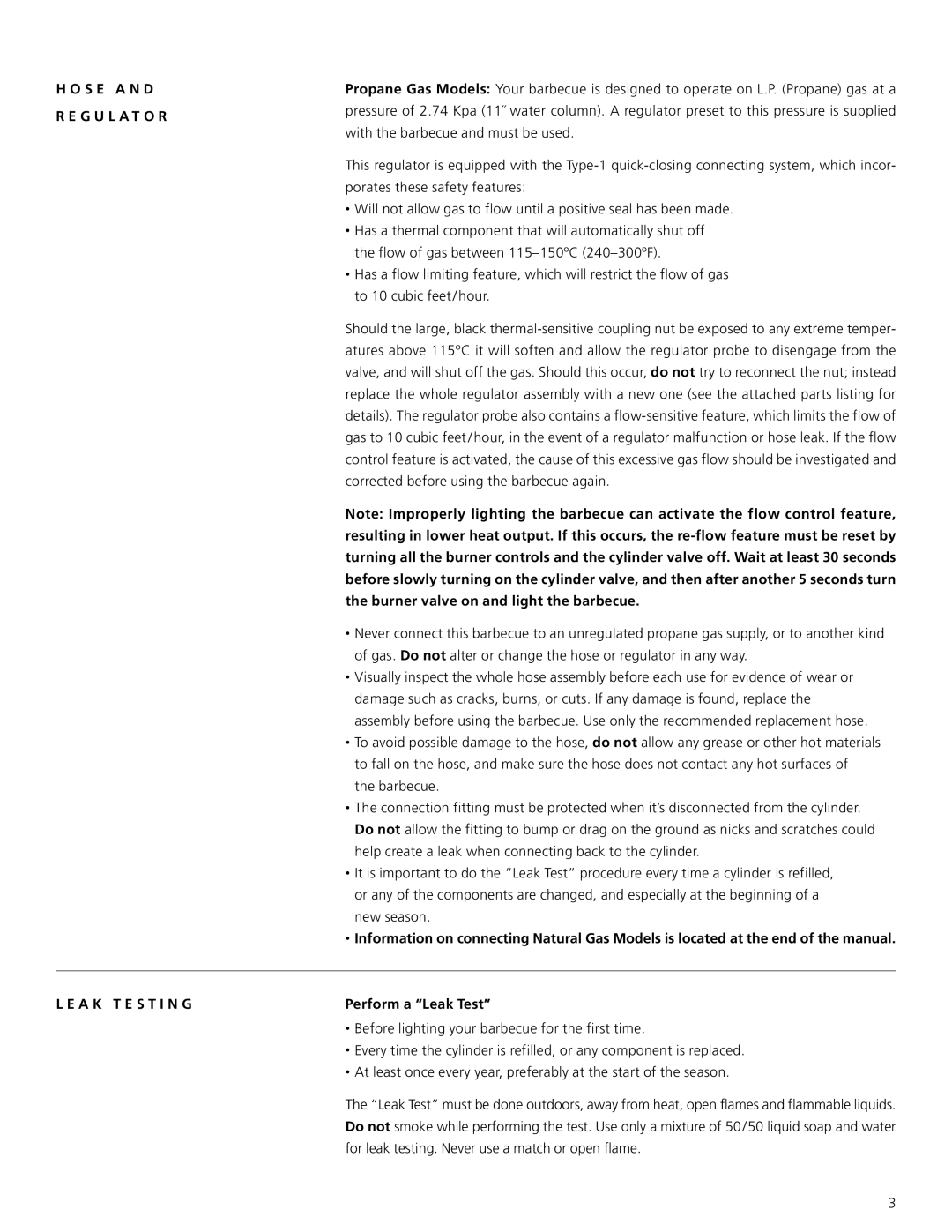
H O S E A N D R E G U L A T O R
Propane Gas Models: Your barbecue is designed to operate on L.P. (Propane) gas at a pressure of 2.74 Kpa (11˝ water column). A regulator preset to this pressure is supplied with the barbecue and must be used.
This regulator is equipped with the
•Will not allow gas to flow until a positive seal has been made.
•Has a thermal component that will automatically shut off the flow of gas between
•Has a flow limiting feature, which will restrict the flow of gas to 10 cubic feet / hour.
Should the large, black
Note: Improperly lighting the barbecue can activate the flow control feature, resulting in lower heat output. If this occurs, the
•Never connect this barbecue to an unregulated propane gas supply, or to another kind of gas. Do not alter or change the hose or regulator in any way.
•Visually inspect the whole hose assembly before each use for evidence of wear or damage such as cracks, burns, or cuts. If any damage is found, replace the assembly before using the barbecue. Use only the recommended replacement hose.
•To avoid possible damage to the hose, do not allow any grease or other hot materials to fall on the hose, and make sure the hose does not contact any hot surfaces of the barbecue.
•The connection fitting must be protected when it’s disconnected from the cylinder. Do not allow the fitting to bump or drag on the ground as nicks and scratches could help create a leak when connecting back to the cylinder.
•It is important to do the “Leak Test” procedure every time a cylinder is refilled, or any of the components are changed, and especially at the beginning of a new season.
•Information on connecting Natural Gas Models is located at the end of the manual.
L E A K T E S T I N G | Perform a “Leak Test” |
| • Before lighting your barbecue for the first time. |
| • Every time the cylinder is refilled, or any component is replaced. |
| • At least once every year, preferably at the start of the season. |
| The “Leak Test” must be done outdoors, away from heat, open flames and flammable liquids. |
| Do not smoke while performing the test. Use only a mixture of 50/50 liquid soap and water |
| for leak testing. Never use a match or open flame. |
3
